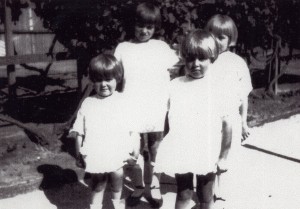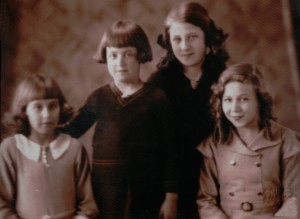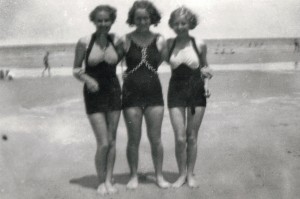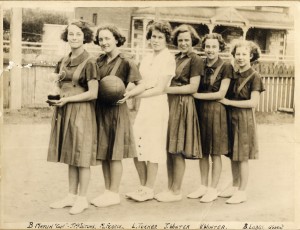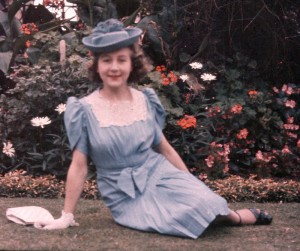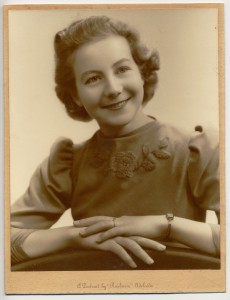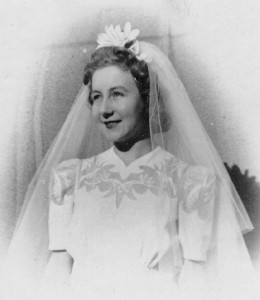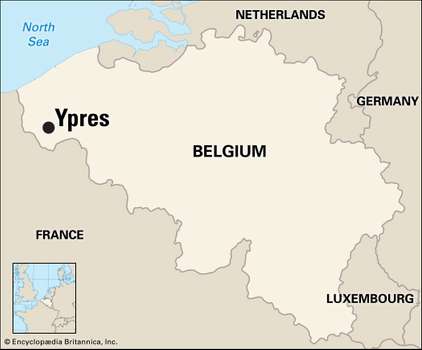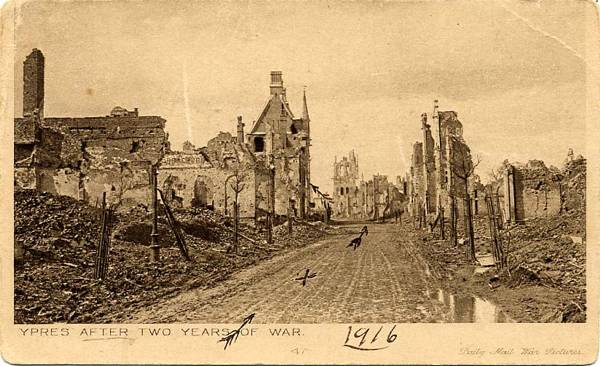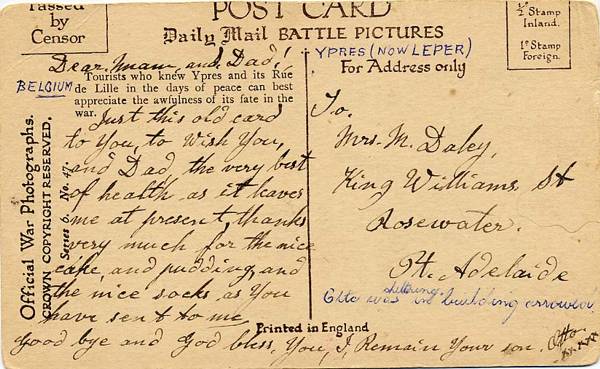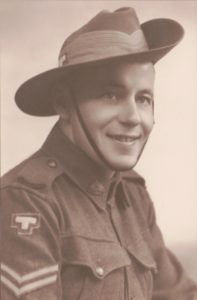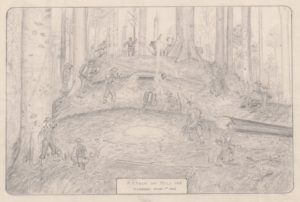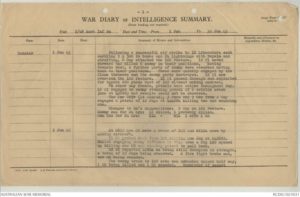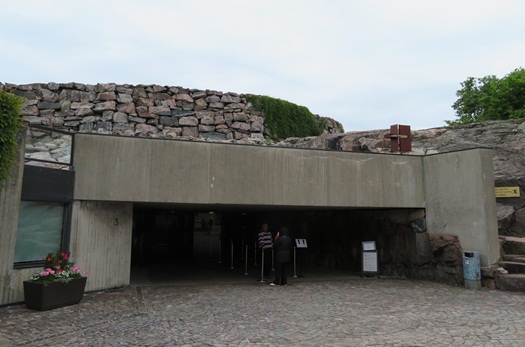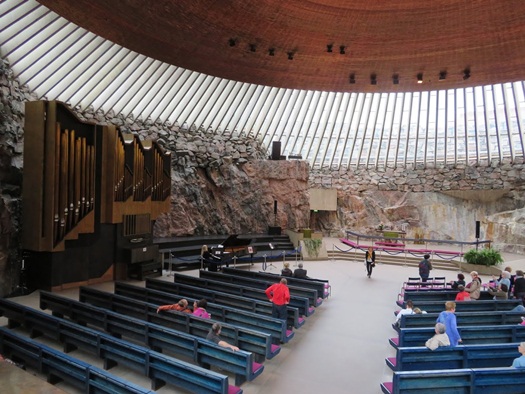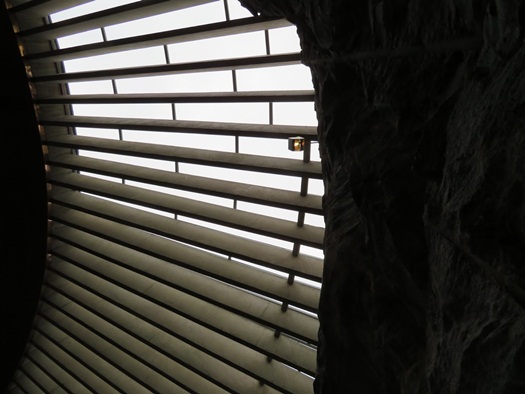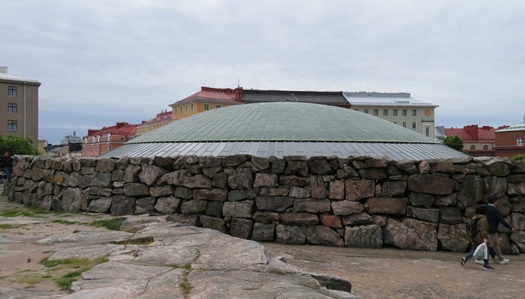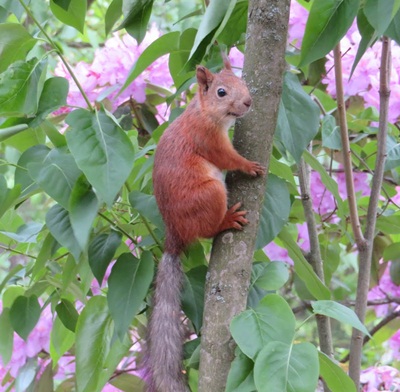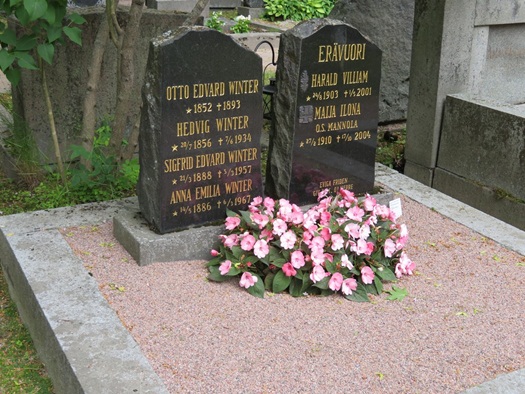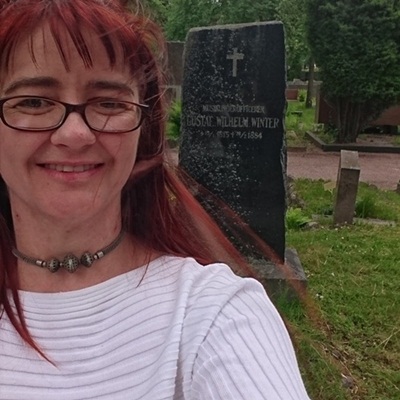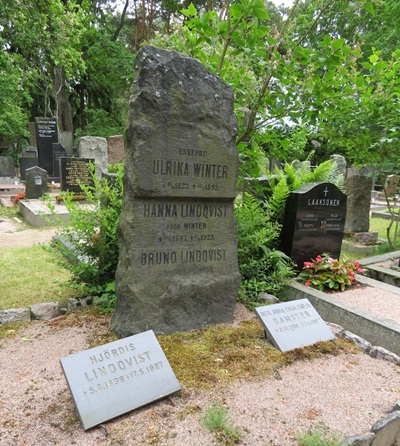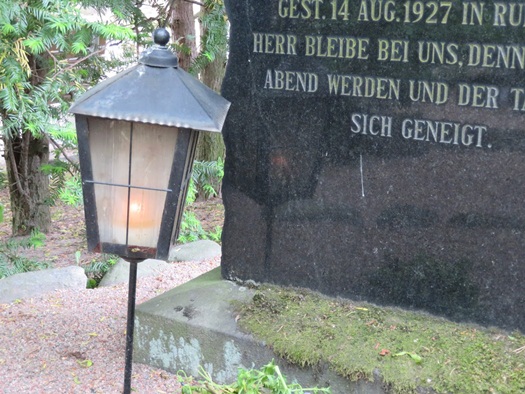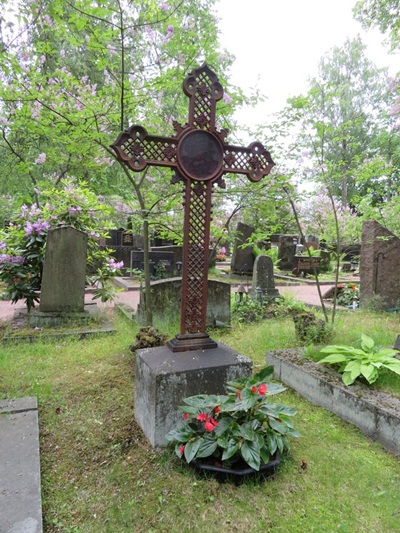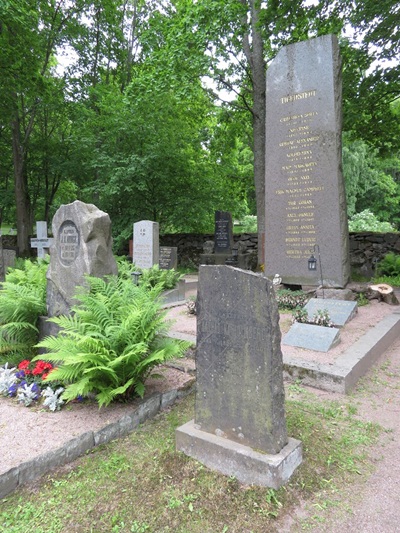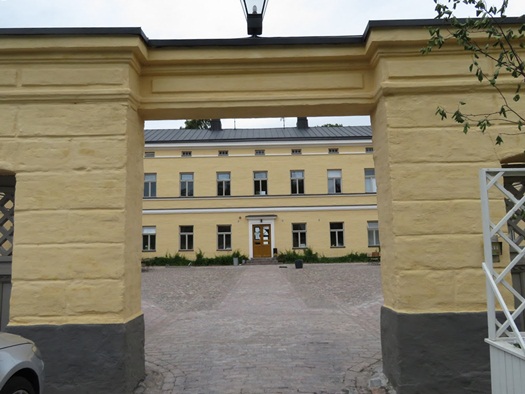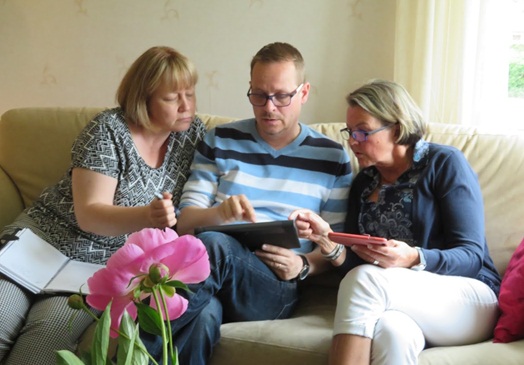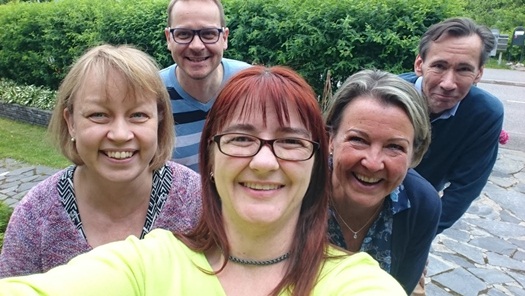Remembering Valda Irene Phillips (1921-2023)
My paternal grandma passed away a few days ago and since then I’ve been thinking about her life and my memories of her.
Valda Winter was the middle of five children born to Otto and Irene Winter, and she grew up in the suburbs of Adelaide. Her father was a Finnish seaman, who ended up in South Australia, and her mum was of English descent.
She was 101, and was very with it and independant until about the age 97 or so. I mean, she’s this tiny (and by tiny, I mean less than 5 foot something) lady, living in her own unit at that age! Remarkable eh!
But sadly there’s a lot that I didn’t (and probably won’t) know about my grandma. I did give her a copy of the “The Book of Myself: A Do-it-Yourself Autobiography in 201 Questions” which is a book that asks questions, and has plenty of room for answers to be written in. She said she would fill in for me, but sadly when we found it on her shelf, it was never written in. So maybe in retrospect, interviewing her directly would possibly have been a better option, as so many memories and stories have now been lost with her passing. And she was the last of that generation, and my last grandparent.
Unfortunately this side of the family weren’t really keepers of much at all, other than photos from more recent eras. So while grandma would have seen so many changes in life, and world events throughout her 101 years … we don’t have any written record of her thoughts on any of it.
Here’s just a few key events that happened during her lifetime:
1929 The Depression hit Australia
1932 Opening of the Sydney Harbour Bridge
1940 Pencillin was developed by Howard Florey and a team of scientists
1942 Japan bombs Darwin
1949 Australian citizenship introduced
1950 Korean War
1954 Queen Elizabeth II visits Australia
1956 Polio vaccine ends epidemic in Australia
1956 Television is launched in Australia
1958 Australia’s first skyscraper built
1966 Decimal currency introduced to NSW, Victoria, Queensland, South Australia and the ACT
1969 Man walks on the moon for the first time
1971 Daylight Saving introduced
1973 Sydney Opera House opens
1974 Cyclone Tracy flattens Darwin
1979 Australian women win the right to maternity leave
1982 Commonwealth Games held in Brisbane
1983 Ash Wednesday devastate large parts of South Australia and Victoria
the list could go on and on!!
I remember lots of wider-family get-togethers when I was younger. I remember their house at Cudlee Creek, and the sheds that got burnt in Ash Wednesday. I remember the house she and grandpa moved to when they moved to the suburbs, and their love of caravaning with friends particularly for golf trips. I remember that she had a penfriend in England for 60 or so years. I remember her passion for her Finnish heritage, as well as anything to do with the Royal family, particularly Queen Elizabeth II. Her display cabinet with royal knick-knacks was quite the collection. I remember staying with them for a week when I did work experience, so I could catch the bus into the city and back each day. I remember that back in her youth she was a dressmaker for Madam Jeanne’s bridal shop, and right thoughout the decades, she caught up the ‘the girls’ from there once a year, which was always a highlight for her. I remember that Christmas time was a big thing for her, and her house was filled with cards, so I have no doubt that she was a big card sender too.
And I remember the afternoons I went to her place to scan old photos.
Anyway below are a selection of photos from her life …
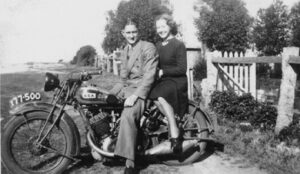
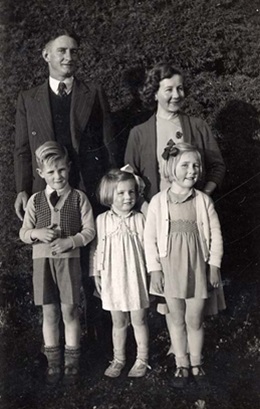
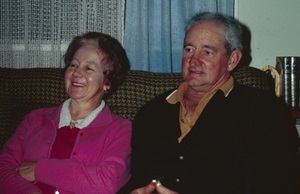
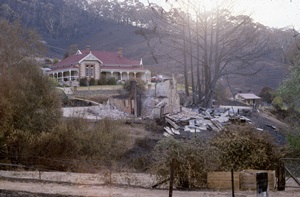
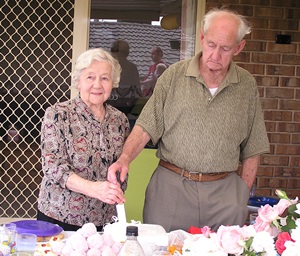
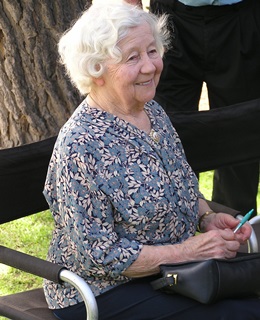
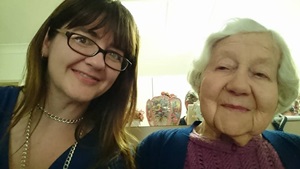
Rest in peace grandma, and I hope you’re enjoying catching up with everyone again.
Anzac Day: A Message from the Battlefield
For Anzac Day this year I’m focussing on Ypres, a city in Belgium that’s on the French border. A prosperous place that in 1914 had a population of around 18,000 people.
Just for reference, Ypres is the Belgian version of the name, while the Australian Diggers knew it as as “Wipers”. And nowadays it is often known by it’s Dutch version, “Ieper”, which is pronounced as “ee-per”.
From November 1914 through until November 1917 Ypres was devastated by war and as you would expect, deserted by its inhabitants. Over that 4 year period, there were over 38,000 Australians who were killed or wounded in the Ypres battles, while the total number of casualties for all sides climbed into the many hundreds of thousands.
Captain Frank Hurley was an Australian official military photographer who was in Ypres during 1918 and captured many unforgettable images of the destruction and the lives of the Australian soldiers during the Third Battle of Ypres (also known as the Battle of Passchendaele). The photograph at the top of this post is one of his very well-known ones. The State Library of New South Wales has a large collection of his war photographs (and diaries) online, so if you’re interested feel free to click here to view them.
Anyway this year I’m remembering my great grandpa, Otto Rafael Winter. I have written about him before, including his service with the Australian military, but this time I’m highlighting a family heirloom.
The postcard pictured below is one of the very few heirlooms that exist from my Winter family, and it’s a postcard that Otto sent from Ypres, Belgium (one of the places he was deployed to) to his parents-in-law, John and Margaret Daley, in South Australia.
The postcard itself is a photograph of what the city of Ypres looked like after two years of war: bombed out buildings and crumbling ruins. But on it he’s drawn little arrows, with a notation on the back written by his daughter saying “Otto was sheltering in building arrowed”. He’s also written a date of 1916 on it, but I’m unsure of when the postcard was actually sent.
A transcript of the what he wrote is as follows:
Dear Mam, and Dad!
Just this old card to you, to wish you and Dad the very best of health as it leaves me at present, thanks very much for the nice cake, and pudding, and the nice socks as you have sent to me.
Good bye and God bless you,
I remain you son, Otto xxxxx
—————————–
To me it’s not ‘just’ a postcard. It’s a tiny picture into what his life was like during the war, and what he saw. It also a little memento that shows me how much he cared for his parents-in-law. Firstly taking the time to write to them. Thanking them for the parcels of cake, pudding and socks that they’d sent. Calling them mam and dad. And signing off as “I remain your son”. That shows he cared, right?
Otto was a merchant seaman from Finland who jumped ship in Australia, and made it his home, so much so, that in 1909 he chose to become an Australian citizen and was naturalised.
He met a local girl, Irene Daley. Married her in June 1915 and their first child was born a few months later.
With the war dragging on much longer than it was expected, the call for more volunteers came and Otto signed up in January 1916, and by May 1916 he was in Belgium. A tunneller, he was in Ypres in March 1918 when he was poisoned in a mustard gas attack and was sent to an Australian military hospital in France to recover.
Otto was lucky. Not only did he survive the mustard gas, but also the rest of the war despite other injuries. In June 1919 he made it home to his wife and family, and lived on until he was 81.
Lest We Forget!
Remembering Tarakan, 1 June 1945
Anzac Day, a day of remembrance of those who fought and died for our country. Whether they lived or died, nothing was ever the same again for those who went, as well as those at home.
For today’s Anzac Day post, I looked at those from my own family who were involved in war – there have been many over the years in the various wars, but this times I’ve chosen to write about Harold Roy Winter, my grandma’s brother who was involved in World War 2.
I’ll start off by saying that the military knows him as “Roy Harold Winter”, rather than “Harold Roy Winter”, simply (or so the story goes) as there was another person already signed up with that name so he switched it, so for this purpose I’ll go with the military version.
Born in Victoria, he grew up in Adelaide, and signed up as a young 25 year old ready to fight for his country. He was assigned to the 2/48th Battalion Australian Infantry Battalion, and got to see to world … and war!
Reading through the letters he wrote to family while he was in the army, he describes going overseas as a great adventure, as well as describing the monotony of army life. He also writes about the strength of the hospital staff …
“The efficiency, determination and sacrifices to their job are a magnificent credit to them, and only we who have experienced it can give a true value to their worth. In many cases, patients were being attended by orderlies who were just as ill, or in some cases even worse. Such is to the spirit of the A.I.F. and it will keep all of us going till we die or win through.”
But it was a sketch that he drew of a battle scene that I wanted to highlight today.
Captioned: Attack on Hill 102, Tarakan, June 1st 1945, I wanted to know more about this, so I headed to the Australian War Memorial’s website, and looked up their Battalion War Diaries which you can find online now. Found the one for the 2/48th Battalion, scrolled through to find the page relating to 1 June 1945 … and bingo!
The entry for 1 June 1945, says the following …Date: 1 Jun to 30 Jun 45
Place: Tarakan
Date: 1 Jun 45
Hour:
Summary of Events and Information:
Following a successful air strike by 18 Liberators each carrying 9 x 500 lb bombs and 24 Lightnings with Napalm and staffing, B Coy attacked the 102 feature. 12 Pl moved forward and killed 6 enemy in their positions. Moving back to their positions. These were quickly engaged by the flame throwers and the enemy party destroyed. 12 Pl now over-ran the 102 feature. 10 Pl passed through and exploited for approx 200 yards West of 102 without making contact.On other coy fronts, patrols were active throughout day. 16 Pl engaged an enemy standing patrol of 6 astride creek jun at 436683 but results could not be observed. The Pnr Offr (Lt SIMPER), 4 Pnrs and 9 ORs from A Coy engaged a patrol of 12 Jays at 444684 killing two and wounding one.
Changed to Bn’s dispositions: B Coy on 102 Feature.
Enemy cas for 24 hrs: 12 killed, 1 probably killed.
Own cas for 24 hrs: KIA -, WIA 1 offr 1 ORpage 1, from the Unit 2/48 AIB,War Diary, 1-30 June 1945 [AWM, ref: RCDIG1023631]
[click for a larger image]
Roy was there. He saw this happen. He saw the action, and he drew it. And this precious WW2 momento is still in the family.
After five years of travelling to various parts of the world fighting as a proud Australian, and surviving several gunshot wounds and other illnesses, Roy returned home to his wife, Vera in South Australia and settled into life after war. No doubt his injuries took their toll, as he died relatively young, at age 58, and is buried at Cheltenham Cemetery in South Australia.
Vera and Roy never had any children, so they don’t have any direct relatives, and Roy died before I was born so I never knew my great uncle, but despite that I wanted pay tribute to him.
Lest We Forget
Finland Day 2 and 3: Churches, Cemeteries, a Mental Hospital and Family
My adventures in Finland continue and cover churches, cemeteries, a mental hospital and family. Sounds like an interesting mix. Right?
Friday 30 June 2017
The day was cool and cloudy, and rain was forecast, still my cousin took me touristing again. This time to the Rock Church in Helsinki. I found this listed on a number of “things you must do in Finland” lists, so asked if we could go there. The Rock Church is a modern church, built in the 1960s that has been built into rock and largely underground. I know my photos don’t do it justice, so here’s a link to find out more about it. It is a big tourist attraction, and yes it even costs to enter (3 Euros/person).
Next stop was the Helsinki cemetery. I visited this cemetery a couple of years ago and was shown some relatives graves then, so it was an interesting challenge to see if we could locate them again from memory. Yay for us, we did, though we pretty much walked the entire cemetery looking for them. But since it’s a spectacular cemetery, and the rain held off it was lovely to just wander. I know a cemetery wouldn’t be on most tourist’s itinerary, but you know it’s what us genie folk LOVE, so I was pleased that we got there.
Following on from visiting a church and a cemetery, my cousin took me to a mental hospital which is now partly a cafe … you’d never guess it from outside would you?
Saturday 1 July 2017
Yesterday was seeing the ancestors, today was seeing the cousins. Today was an ‘at home’ day, so I don’t have any interesting place pictures to show you. But we did have cousins come and visit and with quiche, rhubarb pie, Tim Tams and Fruchocs (chocolate covered apricots), chatter, photos and family history … it was a great afternoon.
Tomorrow we head off to the Summer house.

